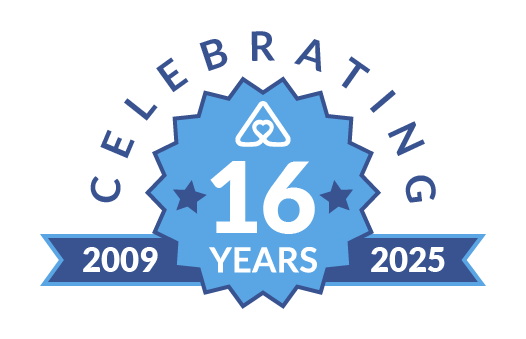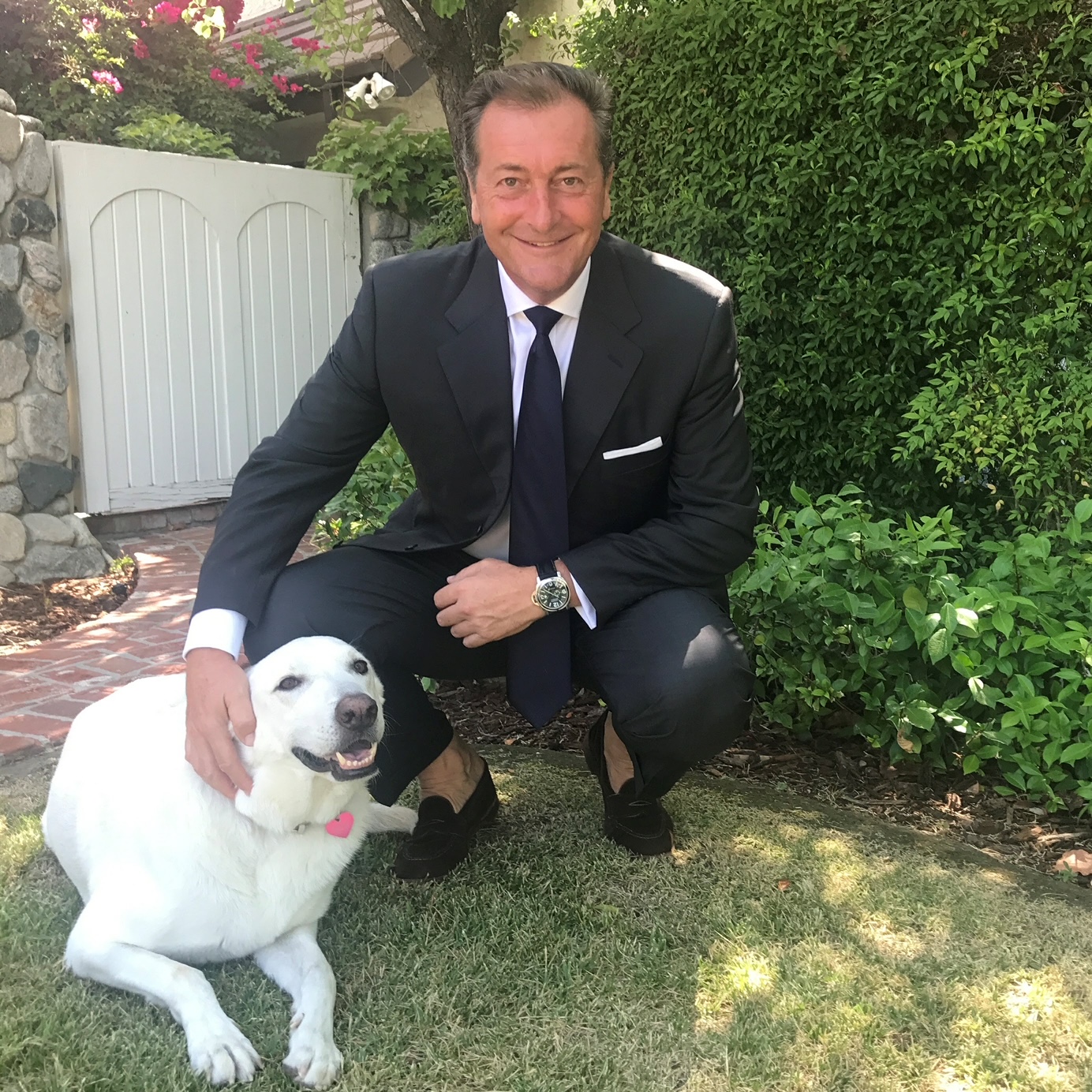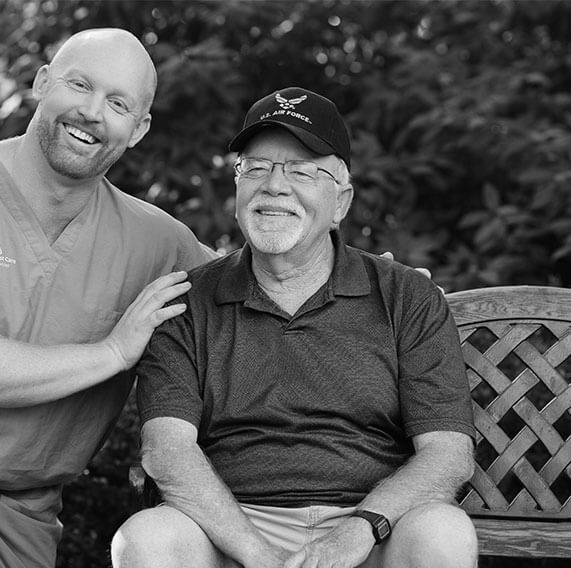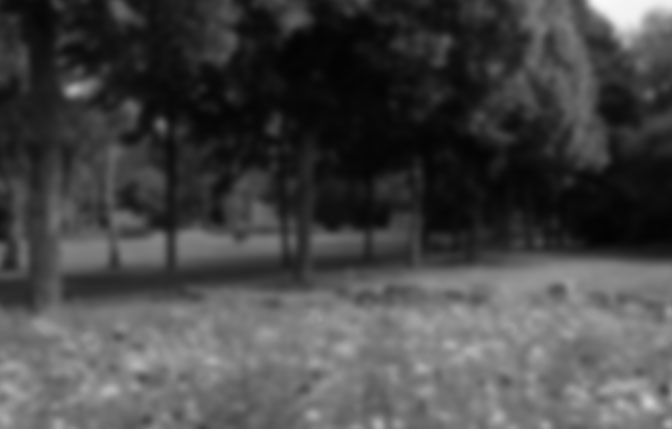Team of Caring Professionals
We are a team of caring and compassionate professionals working together to provide the best possible care for you and your loved ones

Always Best Care combines national strength and standards with local accessibility and personal service. The owner of Always Best Care of Palm Desert is Eiso Wortelboer. Eiso and his team have your loved ones best interests at heart, and will ensure that exceptional service and care is provided to all family members.
We are proud to serve the Coachella Valley area including the desert cities of Palm Springs, Indian Wells, and Palm Desert.
If you find yourself in Orange County, we invite you to check out our sister office Always Best Care of Irvine. Reach out to them for a complimentary living room visit today!
We have strong relationships with area hospitals, social workers, senior communities and senior resources throughout the county. Caregivers at Always Best Care Indian Wells are licensed, bonded, and insured to provide the safest and highest level of care.
There’s no charge for a care consultation or for assisted living referral services*.
*Because Always Best Care is compensated by our contracted assisted living communities, we are happy to provide our senior housing and assisted living referral services at no charge to you


We match our clients with the most appropriate living options

We are a team of caring and compassionate professionals working together to provide the best possible care for you and your loved ones
We have worked with thousands of seniors and their families across the U.S. and Canada, providing the best service each step of the way
Our team of professional caregivers has a proven track record of providing expert care to seniors and people with special needs
We help people with specific needs maintain a safe, independent, and dignified lifestyle with in-home care, senior community referral services and special care services
Discover our services to find the right care solution for you and your loved ones
Expert care services, delivered in the comfort of your home
Referral services designed to help you find the right senior living community
Specialized health monitoring services, powered by advanced healthcare technology
Helping veterans navigate the financing options available from the VA to receive the best care possible
Your local Always Best Care team helps families throughout Palm Desert and the surrounding areas


ALWAYS THERE FOR YOU ALWAYS BEST CARE
“In seeking in-home substitute caregiving for my father, I worked with Sandra and Always Best”
“My family has had the most wonderful experience with ABC Senior Services. Sandra has been”
“Always Best Care responded to my needs quickly and efficiently . I was drowning with”
“I am a current client of this provider I am using Always Best Care of Desert”
“Always Best provided excellent physical care as well as very caring emotional support during this”
“Our family experience an unexpected complex situation. We are so grateful for the support we”
“ABC was prompt is sending us care when we needed it. Darrell is very attentive,”
“Sandra was amazing, working with me to quickly get care for my mom. Both of”
“I am a past client of this provider They showed up, and they helped me on”
“I am a past client of this provider The impact was very helpful to my recovery. The”
“I dealt with Lexie as we needed a caregiver for 2 weeks while on vacation”
“My care was terrific. My care giver was awesome and a terrific cook. I will”
“I am a current client of this provider They have cooperated and tried to help us”
“Best Care Services provided outstanding care of my sister while she was ill. The Caregivers were”
“Very professional caregiver service. We needed a caregiver to help out with our 86 year”
“My 95 year old mother in law fell and we needed help with her home”
“My son in law, just diagnosed with lymphoma, needed care at the last minute. Sondra”
“I am a current client of this provider They make life easier by being by our”
“Excellent customer service by organization, timely, courteous and professional . I would definitely use them”
“Always Best Care provided wonderful in-home care to my uncle while he was on hospice.”
“I can’t thank Sandra enough for her care, time and quick responses when I was”
“I am a current client of this provider The people that they have working for them”
“Provided my family member with excellent care. Communication was always clear. Returned calls immediately as”
“I am a current client of this provider They do a good job on the night”
“When I contacted Always Best Care they sent a caregiver to help my wife do”
“I love JAN MERYLL BELENO because she cooks great, very lovely and I feel very”
“Always Best Care Senior Services came highly recommended to me as I needed assistance with”
“Today Sandra and Bernadette came for the first day with my father. He has had”
“Experience was easy and positive. Blanca was helpful and caring.”
“Hello, I been using always best care for a couple months now this year 2024.”
“I contacted Always Best Care Senior Services on the basis of a good friends referral”
“I am a current client of this provider My father has dementia and has required full-time”
“I am a current client of this provider It has been a positive experience because my”
“I am a current client of this provider She goes above and beyond in cooking and”
“I am a current client of this provider My provider helps me very well. I would very”
“My father came out of the hospital and needed support 24/7 for about 10days. Always”
“I was so happy and pleased with all the help that I received from Sandra”
“I needed help after having a kidney stone removed and I am so grateful that”
“We’ve been using Always Best Care since January of 2024. They’ve been very attentive to”
“I am a current client of this provider I find that I am walking better and”
“In seeking in-home substitute caregiving for my father, I worked with Sandra and Always Best Care starting in December 2024. We utilized their substitutes off and on through 10/1/2025. The caregiving services provided were both scheduled in advance but also, a couple of times, within hours of the need. Always Best routinely came through! Sandra also assisted in helping me find a great “Room and Care” situation to which my father moved in October 2025. Thank you very much for your help over the almost one year period of time.”
“My family has had the most wonderful experience with ABC Senior Services. Sandra has been available to help us with any questions or concerns we have had about care for my aging mother. She provided in home care when we needed it and then recommended and showed us a number of retirement homes when it was time to move my mother to a care facility, one of which was just perfect for my mom. We have been so thankful to have found Sandra and ABC Senior Services to walk us through this challenging time.”
“Always Best Care responded to my needs quickly and efficiently . I was drowning with care giving and they provided a care giver with very short notice. They also worked with me for the time I would need help, even though it was not the normal working hours. Some say care giver services are too expensive but I found their rates reasonable and worth more that i paid given the peace of mind i got .”
“I am a current client of this provider I am using Always Best Care of Desert Cities for my parents. I think we are about eight weeks now. Initially, it was in-home care eight hours a day, and it has just been boosted to 24 hours a day. They provide light housekeeping, meals, and activities of daily life. The staffing is very consistent. They’re very good people.”
“Always Best provided excellent physical care as well as very caring emotional support during this very trying time for our family. Sandra Mendoza was always professional and extremely knowledgeable in her role. She was always available to answer questions. Our family would like to especially acknowledge Marissa, one of the aides, who was extremely kind and knowledgeable. She has a very kind heart, and supported us during the transition of our family member.Thank you very much”
“Our family experience an unexpected complex situation. We are so grateful for the support we received, the timely manner in which all issues and questions were worked thru and responded to, and the compassionate and professional care we received. Sandra was knowledgeable and so helpful and Maria, (a caregiver) was tender… offering a friendly smile when tears welled up. We would have been lost and struggling without Always Best Care.”
“ABC was prompt is sending us care when we needed it. Darrell is very attentive, respectful and compassionate with his care.”
“Sandra was amazing, working with me to quickly get care for my mom. Both of the caregivers that they sent were kind, attentive, and professional – exactly the people you want caring for your loved ones. We got mom settled in her new place and I was sad to say goodbye, and won’t hesitate to call them again in the future. Thank you for all you do to help families care for their loved ones, especially during challenging times. ♥️”
“I am a past client of this provider They showed up, and they helped me on the day I needed them. I like the communication and the staff, the caregiver was excellent.”
“I am a past client of this provider The impact was very helpful to my recovery. The agency was on time and helpful, the nurse knew me from a prior incident from 2019 when I had a heart attack. They knew me.”
“I dealt with Lexie as we needed a caregiver for 2 weeks while on vacation in the desert. Lexie was ON IT, every step of the way and so was Shannon, the caregiver supervisor. These ladies even dashed over on Christmas Eve to deliver a gift to our family. Who does that? Our caregiver, Olga, was AMAZING!! She worked non-stop to give us the caregiving we needed. Don’t hesitate using this agency. You will be pleased and happy.”
“My care was terrific. My care giver was awesome and a terrific cook. I will miss her terribly.”
“I am a current client of this provider They have cooperated and tried to help us when we had problems. I like this group; they are so much better than our previous group. So far, they have provided a caregiver that I like and is honest, and they have cooperated with me.”
“Best Care Services provided outstanding care of my sister while she was ill. The Caregivers were compassionate and professional. Best Care’s Management team kept me informed regarding scheduling and other necessary details. I highly recommend Best Care Services.”
“Very professional caregiver service. We needed a caregiver to help out with our 86 year old mom after her leg surgery. Reyna and Eunice provided excellent care and comfort during her recovery. We highly recommend Always Best Care!”
“My 95 year old mother in law fell and we needed help with her home care. Sandra came out quickly to access the situation and she was able to set us up with a wonderful caregiver. Thomas came and gave my MIL excellent care. His cheerful personality and excellent care giving experience exceeded our expectations. I am so thankful to Always Best Care for their first class service.”
“My son in law, just diagnosed with lymphoma, needed care at the last minute. Sondra at Best Care sent Meghan, who was excellent. She helped tremendously with assisting in showering, wheelchair, etc and most importantly gave my exhausted daughter a chance to rest. I highly recommend Meghan and Best Care.”
“I am a current client of this provider They make life easier by being by our side with taking care of something we can’t. They tend to listen to what your needs are.”
“Excellent customer service by organization, timely, courteous and professional . I would definitely use them again when we come down to the desert. Our caregiver, Beatrice, was excellent! I will ask for her again. She couldn’t be kinder or more helpful.”
“Always Best Care provided wonderful in-home care to my uncle while he was on hospice. He came to trust them and enjoyed their companionship. Magon and Rosa were especially excellent. They were diligent about his care and communicated with me.”
“I can’t thank Sandra enough for her care, time and quick responses when I was searching for care for my 92-year-old mother. She took the time to really understand mom’s needs. Mom was so appreciative of Jan, who first took care of her for a one day stay. And then while I was gone for a week, Reyna was an absolutely incredible caregiver. She would ask mom what options she wanted for breakfast lunch and dinner, managed her medication’s, and checked on her throughout the day. What I thought was so special, was my mom said, that Reyna would sit where she could see my mom at all times from any part of the room. It made my mom feel safe. Reyna was helpful around the house, and mom appreciated the meals she cooked. Reyna took notes and left us with dates when food was fixed, etc… Can’t thank the team enough,”
“I am a current client of this provider The people that they have working for them are very thoughtful and caring. They are very responsive and they get coverage when anyone is out sick.”
“Provided my family member with excellent care. Communication was always clear. Returned calls immediately as needed. I will definitely refer my friends and family for their home care needs.”
“I am a current client of this provider They do a good job on the night and day shifts. I would recommend them, but they need to train all their caregivers the same because not all of them are trained the same.”
“When I contacted Always Best Care they sent a caregiver to help my wife do her Activities of daily living. I met the caregiver named JAN MERYLL BELENO and she is really very pleasant woman and my wife and I really enjoyed her company.”
“I love JAN MERYLL BELENO because she cooks great, very lovely and I feel very safe when I am with her. She’s very professional and if ever I will request again a caregiver for my day I will always request her presence because I really only trust her, very caring and attentive with my needs. I really love her when she’s around. Thank you always best care. Jan is the best caregiver ever.”
“Always Best Care Senior Services came highly recommended to me as I needed assistance with finding an assisted living facility for a dear friend and they did not disappoint. Sandra sat down with me and went over exactly what my friends needs were and then provided a list of facilities for me to view and even set the appointments with the administrators for me. She also asked if I would like her to accompany me. She could not have made the process any easier. Many thanks to everyone at Always Best Care for the terrific service they provide, Judy”
“Today Sandra and Bernadette came for the first day with my father. He has had a drastic health decline in the past month and we had to make the decision to hire a caregiver quickly. My father could not have been happier with the care he received from both Sandra and Bernadette. He felt like they treated him like family and made him feel good, despite the many struggles he is having right now. We are so thankful for this wonderful care!”
“Experience was easy and positive. Blanca was helpful and caring.”
“Hello, I been using always best care for a couple months now this year 2024. I want to appreciate and thank you all. You all been very watchful and helpful every day I have concerns with my aunt and questions in general. I want to thank Kimberly Lopez caregiver she’s has been very helpful and compassionate with my aunt. I am very satisfied with this company. This support I have provided for my aunt is the best and I will continue to recommend for people who need care. :)”
“I contacted Always Best Care Senior Services on the basis of a good friends referral when my 93 years old Father had fallen at home and was transported to Eisenhower Emergency. After spending a few days in the hospital recovering it was apparent he would require additional assistance upon his release back home. I didn’t hesitate to call on the people at Always Best Care for help. Sandra Mendoza answered my call and took the charge suggesting she visit with my Father in the hospital to do a free assessment of what he might require and then we worked out a plan for his care that was flexible and affordable. All the caregivers attending to my father’s needs “were wonderful”, according to my Mother who was very grateful for them being there. Nancy is a name of one of the caregivers that my Mother remembers best as especially, pleasant, caring and kind. Always Best Care Senior Services are truly an amazing group of professional caregivers whom I would highly recommend when care for your friends, family and loved ones on a moments notice. Robert Deller”
“I am a current client of this provider My father has dementia and has required full-time care for a long time. We would have a difficult time taking care of him if we didn’t have them. They seem to train their employees well.”
“I am a current client of this provider It has been a positive experience because my caregiver makes my meals, and that’s the biggest help. I can’t stand for long periods of time at the stove anymore. I would recommend this agency because I am happy with my caregiver.”
“I am a current client of this provider She goes above and beyond in cooking and cleaning. I like Sonya. She is incredible.”
“I am a current client of this provider My provider helps me very well. I would very much recommend the agency to others.”
“My father came out of the hospital and needed support 24/7 for about 10days. Always best care, was very responsive and was able to work with us for 2- 9 hour shifts. This worked incredible well and my father got the care he needed. We especially liked Rebecca. Extremely capable and nice. Our days person Barry was not intrusive but always present. I would use always best care again.”
“I was so happy and pleased with all the help that I received from Sandra . She was great . She was such an understanding person and care an out the situation that she went beyond to help . Thank you Sandra again ????????”
“I needed help after having a kidney stone removed and I am so grateful that I hired ABC caregivers to help me! Sandra met with me a few weeks before to go over everything and was available for any questions. Kari was with me on surgery day and made sure I had everything that I needed, she was experienced and positive. Marlene helped me on post op day 1, she was good company and helped me with errands that I couldn’t do due to my restrictions. Overall I had great experience with ABC and had less anxiety going into my surgery knowing I would be taken care of.”
“We’ve been using Always Best Care since January of 2024. They’ve been very attentive to my Aunt’s needs each and every day. Some days are better than others, but the Caregivers seem to know how to make my Aunt feel at ease. We went from 3 days a week care to 5 days very smoothly. I need to thank Sandra M., the Care Manager, for working with us in putting together the right people for my Aunt so she can keep her dignity in remaining in her own home. Their Family room website is a great way to track which caregiver is scheduled along with which Tasks are completed. If you need an additional task completed, log on to the site, let them know, and it’s taken care of. Without hesitation I would recommend this team to others who are in need of assisted care. Thank you-”
“I am a current client of this provider I find that I am walking better and getting around more with encouragement. I like that she always comes in ready to do whatever is needed. She always has a smile.”
Discover our porfolio of technology and special care services, designed to cater to the needs of you and your loved ones.
Providing around the clock data-based insights and recommendations
Always Best Care helps seniors and their family through the entire process. Our care coordinators are local and have in-depth knowledge of our senior living partners and services.


We are very proud of our awards and recognitions of excellence in the senior care industry

Our passion for helping people maintain a safe, independent and dignified lifestyle represents the strong foundation of
Always Best Care
Our employees are our own – not contractors. Caregivers are thoroughly screened, trained and insured. We are dedicated to exceeding your expectations…always.
Whether you are an experienced caregiver or looking to launch your career, contact us today to learn about opportunities that may be available in your area


Senior care services are for people who need ongoing assistance that cannot easily be provided by their family or friends. Studies show older adults prefer to live independent, non-institutionalized lives, and in-home care is a safe, effective way to provide care in the comfort of one’s own home.
The answer depends on the type of care, the location of care and the level of care that is needed. At Always Best Care, we provide a no obligation care consultation and provide information on many options for paying for home care for you and your loved one.
Our company vision is to work as a united team providing the best senior care in the world, with the broadest range of services, and the most loving and consistent care anywhere. We are dedicated to exceeding your expectations…always
Your Care Coordinator will work with you and your loved one to select the best qualified caregiver for each client. They will carefully review your care plan and try to match the right caregiver with the specific needs of each client. It is our goal and your right to make sure that you and your loved one are completely satisfied with our service and we will bend over backwards to make this happen.
Every Always Best Care location employs all their caregivers, so extensive background and reference checks are conducted. Caregivers are insured for your safety and they all receive extensive training upon being hired and on-going training to keep up with the demand of our industry. What this means for you is that you or your loved one will receive some of the best caregivers our industry has to offer.
The time frame to begin care for a senior will depend on the urgency of the need for the person and family that will be receiving care. That could mean care could start within hours, days or weeks, depending on your needs.
How people pay for senior care depends on their financial situation and the kinds of services they receive. Often, people must rely on a variety of payment sources, including personal funds, government programs, and private financing options.
Traditional Medicare does not pay for 24-hour-a-day care at your home, meals delivered to your home, homemaker services like shopping, cleaning, and laundry that aren’t related to your care plan, custodial, or personal care that helps you with daily living activities like bathing, dressing, or using the bathroom, when this is the only care that is needed.
Home-based care is part of the VA Medical Benefits. All veterans are eligible if they meet the clinical need and it is available.
Explore the latest insights, trends, and tips from the home care and caregiving industry
We have partnered with the best groups and institutions to provide the best care for you.